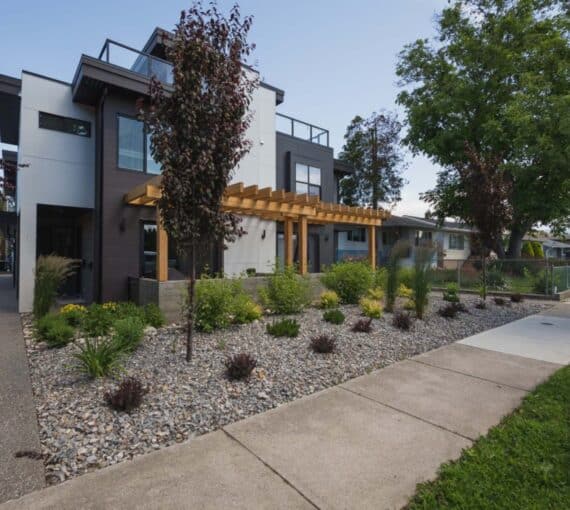
As people search for more affordable lifestyles in increasingly expensive cities, there is a solution that presents a sustainable path forward — if barriers around regulations and public perception can be overcome.
As cities grapple with the dual pressures of affordability and sustainability, the conversation around urban density has become increasingly critical. This dialogue was brought into sharp focus by Calgary City Councillor Courtney Walcott, who shared insights on how rezoning for increased density can lead to more affordable housing, and more inclusive and economically sustainable communities.
Walcott explained that the City of Calgary is currently zoned for single family detached homes, limiting housing choice and pricing many out their neighbourhoods. By rezoning to permit duplexes, townhomes and basement/backyard suites, people have more options.
Drawing from his experience with urban development in Calgary, Walcott said “Density is about choice, options and diversity within communities.” This view sets the stage for deeper understanding of rezoning and increased density and move beyond buzzwords to explore real-life implications.
“Density is about choice, options and diversity within communities.”
Walcott painted a vivid picture of a common scenario: individuals or families in a beloved community suddenly find themselves unable to afford their home due to changing circumstances. He suggested that a diverse array of housing options within a community offers a lifeline, allowing residents to downsize without leaving their networks and neighbourhoods they call home. This vision for urban living is not just about buildings and spaces but about maintaining and strengthening community ties.
A diversity of housing types at different price points benefits the whole market. When supply across varying price ranges increases, it reduces demand and waitlists for government-assisted affordable housing. Those in poverty aren’t forced to compete with middle-income residents just to have a roof. Rebalancing the market through rezoning also helps slow the “slide into poverty” by stabilizing housing costs overall.
However, 78 per cent of Calgary zoned for single or — at best — duplex housing, creates a bottleneck. Lack of housing diversity drives up demand for affordable housing and pushes more people toward government-supported options. Rezoning is a critical step to rebalancing this dynamic, offering a nuanced take on the supply-demand equation that underpins the housing market.
Rezoning is a critical step to rebalancing this dynamic, offering a nuanced take on the supply-demand equation that underpins the housing market.
Walcott also touched on the broader economic implications of increased density. He highlighted Calgary’s revenue-neutral tax system, which aims to more equitably distribute city services costs among residents. In this system, density plays a key role by diluting the tax base and ensuring that more people share the burden and benefit from potentially reduced individual costs. This is a compelling argument for densification, as density leads to more efficient resource use and lighter financial loads for taxpaying community members. He said density also helps reduce transportation emissions and limits suburban expansion, protecting ecosystems such as wetlands.
The conversation then ventured into the link between increased density and inclusivity. Reflecting on the post-Second World War era of urban planning, Walcott underscored how cities have been designed to promote homogeneity in race, culture and socio-economic status. Against this backdrop, rezoning for increased density emerges not solely as a policy tool but as a unique opportunity to create more integrated, diverse and vibrant communities.
The COVID-19 pandemic highlighted the value of proximity to amenities, services and community. As people search for more affordable lifestyles in increasingly expensive cities, infill presents a sustainable path forward — if barriers around regulations and public perception can be overcome. By revising zoning to allow the “right homes in the right places” — density done well — municipal leaders have an opportunity to create inclusive, equitable and resilient communities for the future. But concerted effort is required to change entrenched development patterns and shift public perspectives after decades of car-centric sprawl.
As people search for more affordable lifestyles in increasingly expensive cities, infill presents a sustainable path forward — if barriers around regulations and public perception can be overcome.
Where a high-level discussion of inclusivity lacks tangible real-world impacts, increasing urban density serves as an opportunity for thoughtful urban planning as a means to achieve inclusivity, sustainability and affordability. By carefully rebalancing cities through infill, municipalities have an opportunity to address housing crises and make neighbourhoods more equitable, livable and economically sustainable for generations to come. But significant effort is still needed to overcome the barriers toward infusing density, diversity and inclusion into communities across Western cities. As city decision-makers in urban centres like Calgary and beyond contemplate their futures, there is real transformative potential for rezoning and increased density to build communities that reflect the diversity of human experiences and aspirations.
Charged Up is the story of you — of all of us — on a mission for a cleaner, healthier charged-up Canada.
